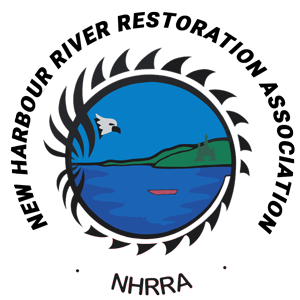River restoration entails, repairing a waterway that is struggling to perform necessary, ecological functions, such as removing excessive amounts of nutrients and sediment that have the potential to suffocate coastal zones, impact fish, and plant life as well as wildlife. Recreation property and land values are also impacted by the health of rivers and streams.

Water Testing
Water testing is the primary activity in the implementation of river restoration. It entails having samples taken and analyzed by professional laboratory services to get a start point of what the river needs in terms of restoration or rehabilitation. It is done by taking PH and temperature levels with a YSI monitor. This was done in New Harbour with a monitor owned by Atlantic Water Network. The readings were read , recorded and forwarded to Nova Scotia Salmon Association’s field biologist, Nicholas MacInnis.
Usage Analysis
Collecting information from testing and observations promote understanding what the river does, and what it is used for. This is important in developing restoration activities that support what needs to be restored within the health of the river itself.
Community Engagement
Collecting information from testing and observations promote understanding what the river does, and what it is used for. This is important in developing restoration activities that support what needs to be restored within the health of the river itself.
Bank Stabilization
Bank stabilization can be achieved in many ways, such as replanting, essential, stabilizing, plant life, or using wire baskets filled with stones. These are 2 examples of stabilization practices. Bank stabilization is important to maintaining a river’s health as erosion impacts flow and ecosystem life sustainability.
Barrier Removal
Flow impeding barriers are often found in river ways that limit a river’s ability to naturally cleanse and regenerate itself. These barriers could come in the form of dams, downed trees, and erosion created rock formations.
Monitoring Restoration Processes
Monitoring consists of ongoing ecological testing, observation of fish, plant and wildlife in and along the river. Monitoring allows for evaluation of practises and responses and effectiveness of restorative processes.
